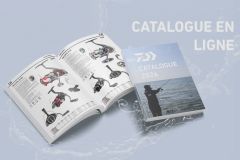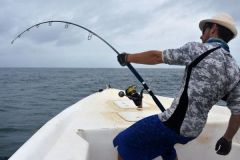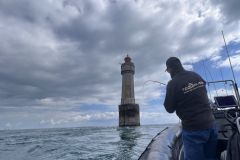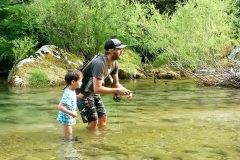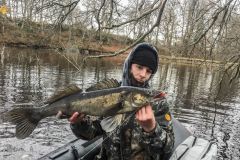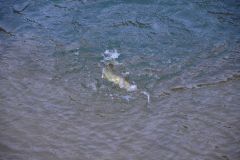1) Transportation
Closing a car door on the scion, or stepping on a cane is the kind of accident that can happen. In such cases, it's very simple to analyze the cause of the breakage, which is obvious.
To prevent this kind of mishap, never leave your walking stick unattended on the ground, but always keep it in full view of others, and handle it with care.
2) Shocks
A shock to a rod, such as a lure hitting the blank or a rod falling on a rock, can quickly be detrimental. Even if the rod appears to be unaffected, its inner layers can be cracked and only a few casts later it will break.
To protect rods from impact, especially during transport or when not in use, nylon gloves are a good solution.

They are very practical when carrying several canes in a bundle, to prevent them from colliding with each other.
3) Too narrow an angle
The angle between the rod and the line must be at least 90°. If the angle is too narrow, the rod will not work properly. The inner part of the rod will compress and may break.
The most critical moment in a fight is when the fish reaches the angler, when it's time to catch it. When you're hooked on the bottom and trying to free yourself by pulling on the rod is also a risky moment for the rod.

Using a landing net to catch a fish or taking the line in hand to unhook your lure are solutions to limit closed angles. Often, when this type of breakage occurs, a resonance effect will occur and the rod will break into several pieces.
4) A sudden stop
A sudden stop during casting is probably one of the most frequent causes. This can be caused by the reel resetting instead of allowing the line to unwind freely. Another cause is a knot that gets caught in the rings during casting.
In the first case, always make sure that the pick-up or trigger is open, in particular by making sure you hear or feel the mechanical click. If in doubt, it's better to repeat the operation rather than launch.
In the second case, it's best never to thread knots through the rings. If this is not possible, for example when using a long discretionary leader, make sure that the knot you tie passes smoothly through the rings.
5) Unsuitable use
Overloading a rod, by going beyond its casting power, is really not good for guaranteeing its longevity. It risks breaking, as it is not designed to withstand the excess load at the moment of casting.
In the same spirit, using a line that is too strong for the rod's capacity puts it at risk. In this case, it's the rod that acts as the fuse, whereas normally it's the leader or the line that should break, before the rod, for example, when you catch a fish that's too big for the rod.
6) Animals
Another point is that animals like to eat the handles of foam or cork canes. In the home, beware of cats as well as dogs. In the garage, if you have mice, they can cause the same kind of damage. So it's best to store your canes in a cupboard, or in a room where animals don't have access.

Selecting a good after-sales service
Finally, the breakages described above are in no way attributable to the quality of the rod, as they result from an error in use. However, choosing a distributor or a brand renowned for the quality of its after-sales service means you can obtain the broken part without too much trouble, and thus minimize the impact of a broken rod.

 /
/ 


